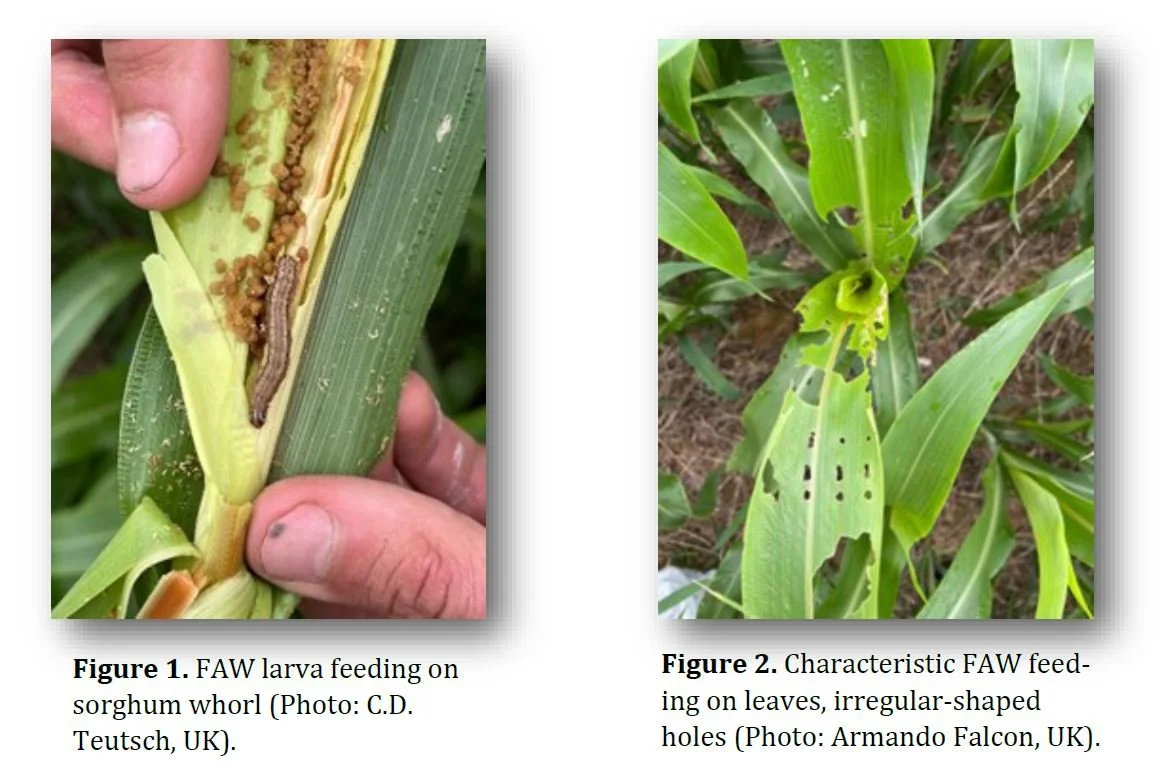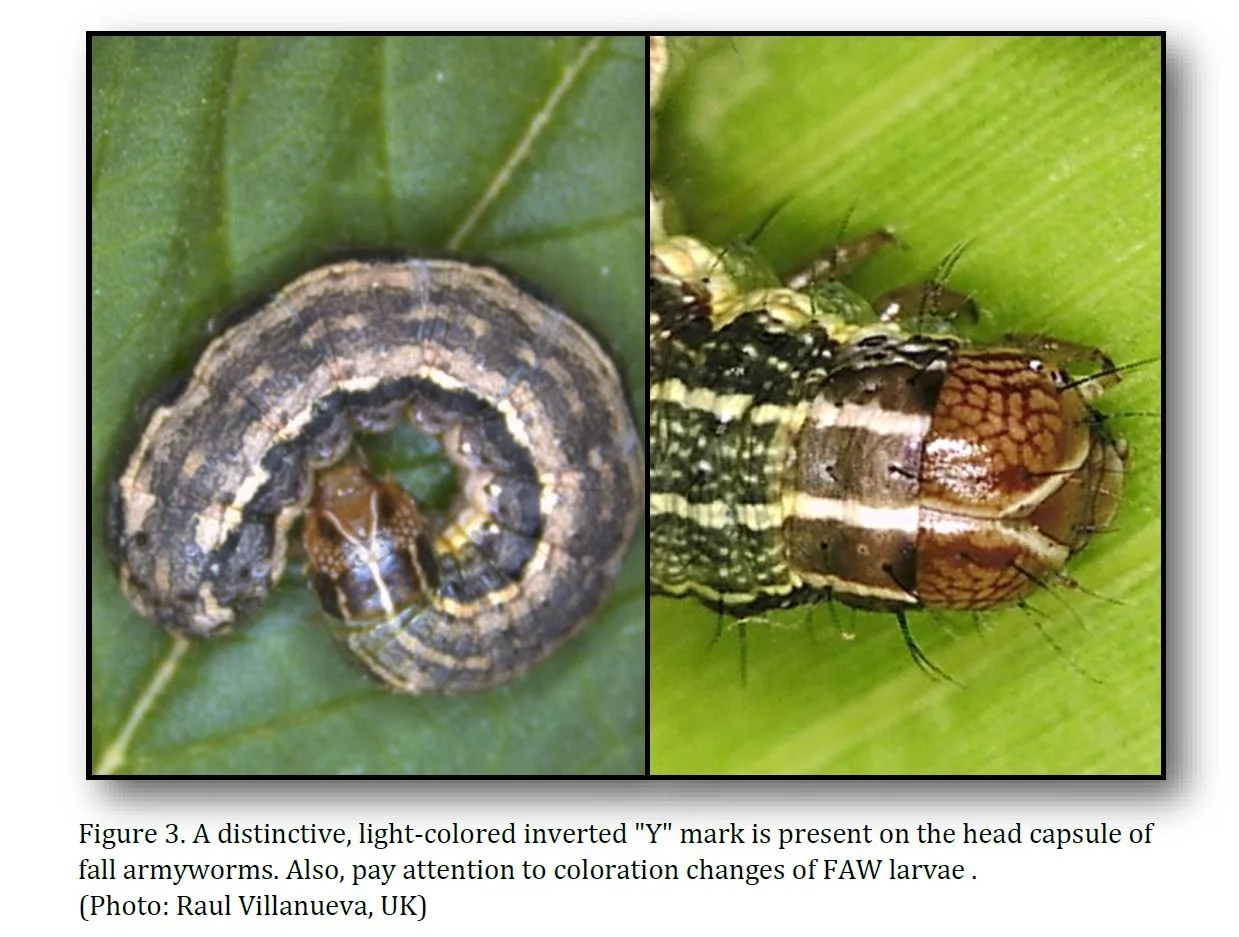Occurrence of Fall Armyworms: 2021 vs. 2022
The larval stage of the fall armyworm (FAW), Spodoptera frugiperda (Lepidoptera: Noctuidae) is a voracious defoliator of many plant species. The FAW is a native pest of the New World; however, it overwinters in south Florida or in the southernmost region of Texas (The Rio Grande Valley) in the continental USA. The adults are strong fliers and move northward during the summer months. Out-breaks happening some occasions, affecting corn, forages, or double-crop soybeans. In soybeans, fall armyworms can be devastating defoliators affecting plants from the seedling to V4 stages.
Impact in 2021
One common consideration in 2022 for entomologists and Extension specialists is to hypothesize about the presence of the fall armyworm for this growing season. In 2021, this pest caused an out-break in many areas of the U.S.--from states around the Gulf of Mexico to Kentucky, many northern states, and Ontario and Quebec in Canada. In many areas, FAW caused devastating consequences for grasses, forages, and double crop soybeans. Dr. C. Teutsch (UK Forage Extension Specialist) found that in 2021 the economic impact of this pest to hay and pasture crops in Kentucky exceeded $5 mil-lion.
There are two strains of FAW, the rice and corn strains. In 2021, the rice strain (prefers to feed on rice, grasses, and forages) was the strain that caused the outbreak. In addition, for unknown reasons, this strain appeared earlier than in previous years; and moths were continuously migrating until late October and November. The rice strain 2021 might have been resistant to pyrethroid insecticides, as pesticides used to control them were not effective.
Impact in 2022
In late June 2022, FAW detection on Lubbock, TX by a Texas A&M specialist found the highest FAW numbers in 12 years of trapping. Although this is alarming, this location is in the northwestern region of Texas and FAW migrant moths may take a different path. Furthermore, in contacts with Extension specialists from the southernmost area of Texas, the Rio Grande Valley, informed me that by the end of July, FAW has not been a problem this year. This is an area where FAW overwinters and some FAW moth populations migrate from Mexico to colonize the continental U.S.
This year, trapping of FAW in Lexington and Princeton in KY has not been high, and in most cases, captures have not been detected. For example, during the last week of July, there were no FAW trap-pings in either location. However, be aware that a single FAW female can lay over 2000 eggs and populations can increase rapidly.
Here we are reporting the presence of FAW in a field of forage sorghum in Caldwell County. Larvae captured in this field were in different stages of development, from 1/3 inch to more than 1 inch in length feeding in the whorl (Figure 1). The percentage of damage observed along 5-foot samples ranged from 12% to 56%. Fall armyworm larvae were found feeding deep in the whorl, frass was visible from the outside (Figure 1), and characteristic feeding (irregular-shaped holes similar to grass-hopper damage) was present on leaves (Figure 2).
The FAW appetite increases while larvae move from the first to sixth instar, and the defoliating damage is greatly noticed by farmers and scouting agents after the fourth instar. The six larval in-stars can be completed in 14 to 30 days, depending on the temperature.
Fall armyworm resembles corn earworm and armyworm; however, fall armyworm has a white inverted "Y" mark on the front of the dark head (Figure 2). Pupation occurs in the ground and adults can live up to 20 days.





